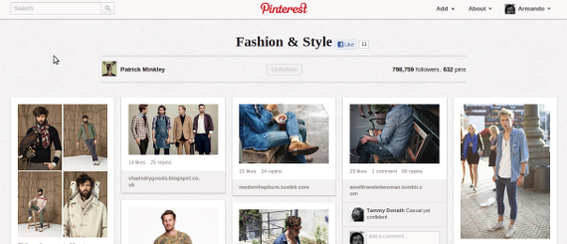Merging affiliate marketing with photo sharing on social media sites may help online retailers boost site traffic and sales whilst earning loyal patrons.
Affiliate marketing is pay-per-performance marketing wherein merchants reward affiliates — sometimes called “publishers” — that drive web traffic or sales for the merchant. Affiliates are typically responsible for the actual marketing to the customer on the merchant’s behalf.
Social media marketing garners relationships with customers or potential customers through engagements on social media sites. As these social relationships grow and consumers develop an affinity for a particular seller, those consumers are more likely to make a purchase from that seller.
Combining Affiliate Marketing with Pinning
In March 2012 a Pinterest user called “Steve” claimed to be earning more than $1,000 per day, posting product images from Amazon’s affiliate program on Pinterest pin boards. Eventually, Steve admitted that the claim was, in fact, false. But it did shed some light on the interesting combination of pinning and affiliate programs.
Pinterest — and presumably some similar sites — could be good sources of site traffic and sales.
As an example, in May 2012, Mark Hayes wrote in the Shopify blog that the number of pin-generated orders had quadrupled in just six months for merchants using Shopify ecommerce platform. The actual number of pin-powered sales was still relatively low, but good relative to some other social media sites like Twitter, for example.
Separately, reports in June and July of this year, suggest that Pinterest drives more site traffic (referrals) than Twitter or Google+.
Online merchants could offer affiliate content that affiliates could pin on social sharing sites like Pinterest, Fancy, Tap it, Dart it, or similar. Traffic from these sites should be just as valuable — and perhaps more valuable — than click-throughs coming from affiliates’ own blogs, digital magazines, or other sites.
What follows are three tips for arming affiliates with pin-worthy photography and good reasons to post it.
1. Offer Lifestyle Images
There are certainly some Pinterest users who pin product images directly from a merchant’s product detail page. But more often, good quality pins are typically either collages showing many related products or so-called lifestyle photos that show products being used.
As an example, consider pinner Patrick Minkley, who is district visual manager for Anthropologie, a U.K.-based clothing retailer, has more than 880,000 thousand followers on Pinterest. Minkley’s pins most often show fashion, furniture, or beautiful objects, not on plain white backgrounds as one might find on a product detail page, but in “real” life use.
Patrick Minkley, who is one of the most popular Pinterest users in the world, most often pins what marketers call lifestyle images.
Offer affiliates a broad collection of lifestyle photography.
2. Use Reasonable Incentives
Affiliates are typically paid when a shopper completes some action, like visiting a retailer’s site or making a purchase.
These are certainly metrics that can be measured for pinning affiliates. But it may also make sense to pay for actually pinning an image.
Each merchant’s specific industry (and competition) will in some respects determine how much to pay affiliates. But an example might be 10 cents for each pinned image, 15 to 20 cents for each individual sent to a landing page, and perhaps 1 to 3 percent of the value of a sale for each purchase.
Offer strong enough incentives to encourage affiliates.
3. Comment on Affiliate Pins
It can also be a good idea to engage with affiliates on Pinterest or similar sites. Comments, for example, can be an indicator of interest, thus getting a conversation started around one’s affiliates’ pins may encourage sharing.
Don’t be afraid to comment or like pins from affiliates.
Summing Up
Encourage affiliates to pin compelling images and link back to good landing pages. The additional traffic and the potential for sales at least make the effort worth trying. Be sure to monitor and measure a pin-based affiliate campaign just like any other marketing program.





